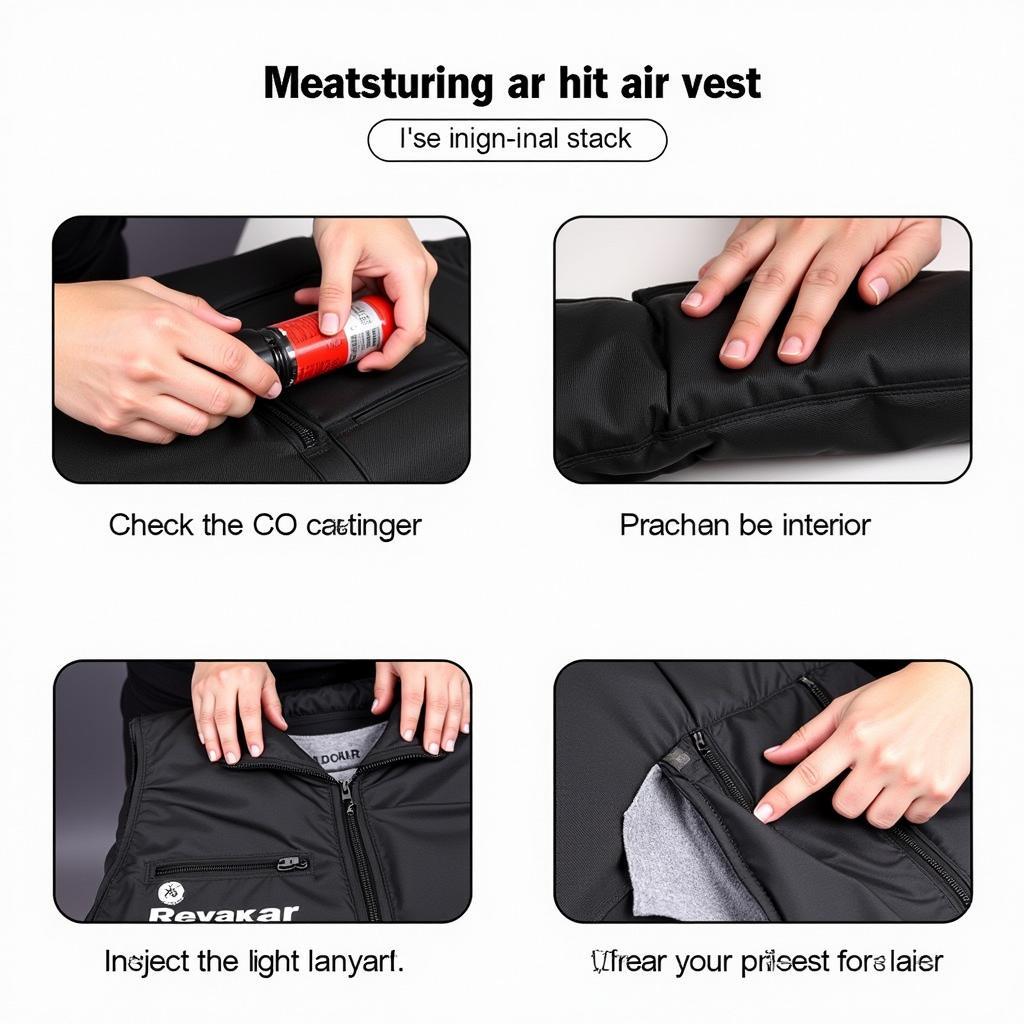Hit Air Horse Riding Vests are rapidly becoming a must-have safety item for riders of all levels. These innovative vests offer an extra layer of protection in the event of a fall, significantly reducing the risk of serious injury. This comprehensive guide will explore everything you need to know about hit air vests, from how they work to choosing the right one for you.
Understanding Hit Air Technology
So, how does this life-saving technology work? Hit air vests utilize a CO2 canister connected to a lanyard attached to the saddle. If a rider falls, the lanyard detaches, activating the canister and rapidly inflating the vest. This inflation creates a protective airbag around the rider’s torso, neck, and back, cushioning the impact and minimizing the risk of broken bones, spinal injuries, and internal damage. These vests offer a far greater level of protection than traditional body protectors, which rely on padding alone.
Are hit air vests reusable? Absolutely! After deployment, simply replace the CO2 canister, and your vest is ready to go again. This makes them a cost-effective long-term safety investment.
Choosing the Right Hit Air Horse Riding Vest: A Detailed Look
Selecting the perfect hit air vest depends on various factors, including your riding discipline, body type, and personal preferences. Key considerations include the fit, weight, and activation time of the vest.
- Fit: The vest should fit snugly but allow for a full range of motion. It’s crucial to choose the correct size to ensure optimal protection during a fall. Check the manufacturer’s sizing chart and consider trying on different models to find the best fit.
- Weight: Hit air vests are lightweight and designed not to impede your riding. However, some models are lighter than others. Consider your comfort level and riding style when choosing a vest.
- Activation Time: While all hit air vests deploy quickly, slight variations in activation time exist. Faster activation times can be beneficial for high-speed disciplines like eventing and cross-country riding.
Hit Air Vests: Addressing Common Concerns and Misconceptions
Some riders worry about accidental deployments. Rest assured, hit air vests are designed with safety mechanisms to prevent this. The lanyard requires a significant pull to activate the CO2 canister, minimizing the risk of accidental inflation. Another concern is the cost. While hit air vests represent an investment, they offer unparalleled protection and peace of mind, making them a worthwhile purchase for any serious rider. Thinking about that bruder toy horse trailer? Perhaps prioritize your safety first.
Maintaining Your Hit Air Vest: Tips and Best Practices
Regular maintenance is crucial for ensuring the proper functioning of your hit air vest.  Maintaining a Hit Air Vest This includes checking the CO2 canister regularly for expiry and damage, inspecting the lanyard for wear and tear, and keeping the vest clean and free from debris.
Maintaining a Hit Air Vest This includes checking the CO2 canister regularly for expiry and damage, inspecting the lanyard for wear and tear, and keeping the vest clean and free from debris.
Why Choose a Hit Air Vest? Expert Insights
“Hit air vests are a game-changer for equestrian safety,” says Dr. Emily Carter, an equine veterinarian with over 20 years of experience. “They provide a level of protection that traditional body protectors simply can’t match, significantly reducing the risk of severe injuries in the event of a fall.” This aligns with the experience of many riders who have benefitted from the added protection.
“I wouldn’t ride without my hit air vest,” adds professional eventer, Sarah Mitchell. “It provides a level of confidence that allows me to push my limits while knowing I have that extra layer of safety.” Just like how a horse riding fly mask protects your horse’s sensitive eyes, a hit air vest safeguards your well-being. Remember that how to measure my horse for a saddle is crucial for comfort, but safety comes first.
Hit Air Horse Riding Vest: A Conclusion
Investing in a hit air horse riding vest is a crucial step towards prioritizing your safety in the saddle. These technologically advanced vests provide unparalleled protection, giving riders peace of mind and confidence. From understanding the mechanics to choosing the right fit and maintaining your vest, this guide has equipped you with the knowledge to make an informed decision. Are you ready to enhance your safety and embrace the confidence that a hit air vest provides? Perhaps you’re even considering a horse with bow tie for your next event? Remember safety first!
FAQs
- How often should I replace the CO2 canister?
- Can I wear a hit air vest over other riding apparel?
- Are hit air vests suitable for all riding disciplines?
- What should I do after my hit air vest deploys?
- How do I choose the correct size hit air vest?
- Where can I purchase a hit air vest?
- Are there different types of hit air vests for children and adults?
Common Riding Scenarios & Hit Air Vests:
-
Scenario: A rider is thrown forward over the horse’s head during a jump.
-
How Hit Air Helps: The vest deploys upon separation from the saddle, cushioning the impact on landing.
-
Scenario: A horse spooks and the rider is unseated.
-
How Hit Air Helps: The quick inflation protects the rider’s vital organs during the fall.
Further Reading:
For more information on equestrian safety, check out our articles on halloween horse rider.
For any inquiries or assistance, please contact us: Phone: 0772127271, Email: [email protected]. Our team is available 24/7 to assist you. We’re located at QGM2+WX2, Vị Trung, Vị Thuỷ, Hậu Giang, Việt Nam.